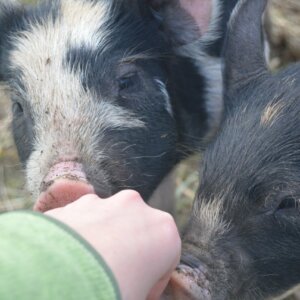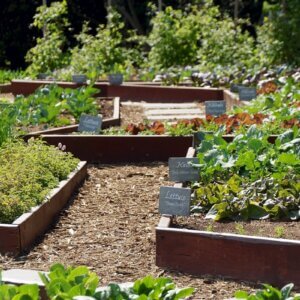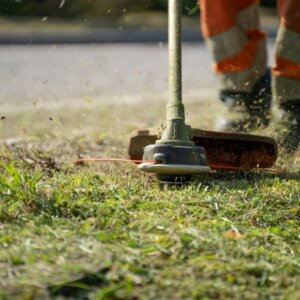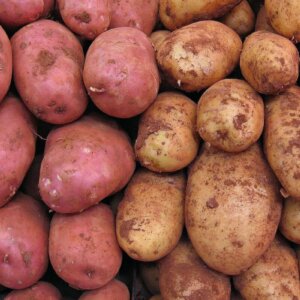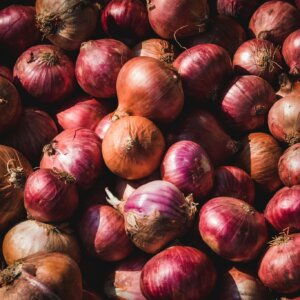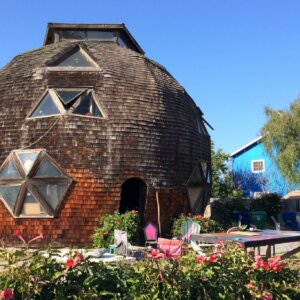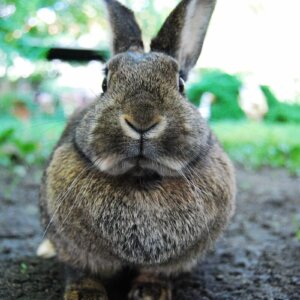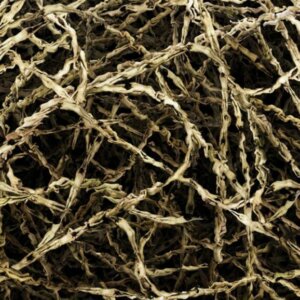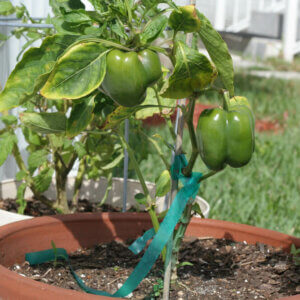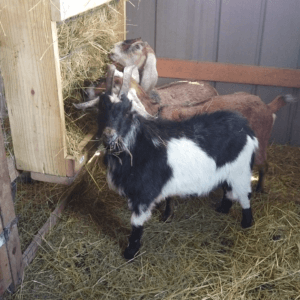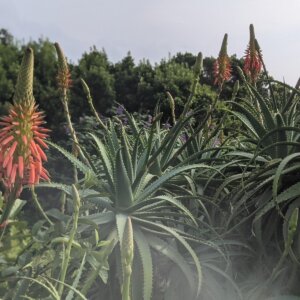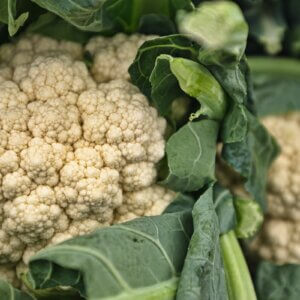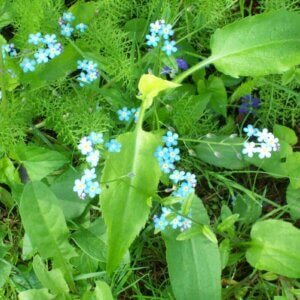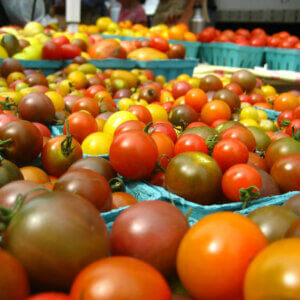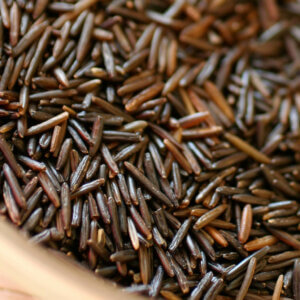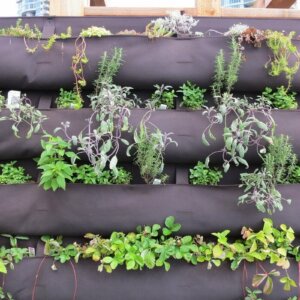Gaia’s Garden: A Guide to Home-Scale Permaculture, 2nd Edition
Author: Toby Hemenway
Gaia’s Garden has sparked the imagination of home gardeners the world over by introducing a simple message: working with nature, not against her, results in more beautiful, abundant, and forgiving gardens.
Many people mistakenly think that “ecological gardening”―which involves growing a wide range of edible and other useful plants―can take place only on a large, multiacre scale. As Hemenway demonstrates, it’s fun and easy–even for the beginner–to create a “backyard ecosystem” by assembling communities of plants that can work cooperatively and perform a variety of functions.
Purchase Gaia’s Garden on Amazon
Practical Permaculture for Home Landscapes, Your Community, and the Whole Earth
Authors: Jessi Bloom, Dave Boehnlein
Permaculture is more popular than ever, but it can still be a daunting concept. If you are new to permaculture and interested in learning more, Practical Permaculture offers authoritative, in-depth, and hands-on advice for a more holistic approach to sustainable living.
Jessi Bloom and Dave Boehnlein, two dynamic leaders in the permaculture community, explain the basics of permaculture, share their design process, and explore various permaculture systems including soil, water, waste, energy, shelter, food and plants, and animals and wildlife. They also profile the fifty most useful plants for permaculture landscapes.
Purchase Practical Permaculture on Amazon
The Resilient Farm and Homestead: An Innovative Permaculture and Whole Systems Design Approach
Author: Ben Falk
The Resilient Farm and Homestead is a manual for developing durable, beautiful, and highly functional human habitat systems fit to handle an age of rapid transition.
Ben Falk is a land designer and site developer whose permaculture-research farm has drawn national attention. The site is a terraced paradise on a hillside in Vermont that would otherwise be overlooked by conventional farmers as unworthy farmland.
Falk’s wide array of fruit trees, rice paddies (relatively unheard of in the Northeast), ducks, nuts, and earth-inspired buildings is a hopeful image for the future of regenerative agriculture and modern homesteading
Purchase The Resilient Farm and Homestead on Amazon
Permaculture for the Rest of Us: Abundant Living on Less than an Acre
Author: Jenni Blackmore
Many of us want to increase our self-sufficiency, but few have access to the ideal 5 sunny, gently-sloping acres of rich, loamy, well-drained soil.
Jenni Blackmore presents a highly entertaining, personal account of how permaculture can be practiced in adverse conditions, allowing anyone to learn to live more sustainably in a less-than-perfect world. With a rallying cry of “If we can do it, you can too,” she distills the wisdom of 20 years of trial and error into a valuable teaching tool.
Purchase Permaculture for the Rest of Us on Amazon
Sepp Holzer’s Permaculture: A Practical Guide to Small-Scale, Integrative Farming and Gardening
Authors: Sepp Holzer, Anna Sapsford-Francis, Patrick Whitefield
Sepp Holzer farms steep mountainsides in Austria 1,500 meters above sea level. His farm is an intricate network of terraces, raised beds, ponds, waterways and tracks, well covered with productive fruit trees and other vegetation, with the farmhouse neatly nestling amongst them. This is in dramatic contrast to his neighbors’ spruce monocultures.
In this book, Holzer shares the skill and knowledge acquired over his lifetime. He covers every aspect of his farming methods, not just how to create a holistic system on the farm itself, but how to make a living from it.
Purchase Sepp Holzer’s Permaculture on Amazon
Permaculture: Principles and Pathways Beyond Sustainability
Author: David Holmgren
David Holmgren brings into sharper focus the powerful and still evolving Permaculture concept he pioneered with Bill Mollison in the 1970s. It draws together and integrates 25 years of thinking and teaching to reveal a whole new way of understanding and action behind a simple set of design principles.
The 12 design principles are each represented by a positive action statement, an icon and a traditional proverb or two that captures the essence of each principle.
Purchase Permaculture: Principles and Pathways beyond Sustainability on Amazon
Permaculture: A Designers’ Manual
Author: Bill Mollison
Are you excited about permaculture but unclear how to put it into practice for yourself? In this unique, full colour guide, experienced permaculture teacher Aranya leads you through the design process from beginning to end, using clear explanations, flowcharts and diagrams.
It is based on course worksheets which have been designed, refined and tested on students over time. Linking theory to practice, he places the ethics, principles, philosophies, tools and techniques directly into the context of the process itself. While written for anyone with a basic grasp of permaculture, this book also has plenty to offer the more experienced designer.
Purchase Permaculture: A Designers’ Manual on Amazon
The Permaculture City: Regenerative Design for Urban, Suburban, and Town Resilience
Author: Toby Hemenway
Permaculture is more than just the latest buzzword; it offers positive solutions for many of the environmental and social challenges confronting us. And nowhere are those remedies more needed and desired than in our cities. The Permaculture City provides a new way of thinking about urban living, with practical examples for creating abundant food, energy security, close-knit communities, local and meaningful livelihoods, and sustainable policies in our cities and towns.
The same nature-based approach that works so beautifully for growing food―connecting the pieces of the landscape together in harmonious ways―applies perfectly to many of our other needs. Toby Hemenway, one of the leading practitioners and teachers of permaculture design, illuminates a new way forward through examples of edge-pushing innovations, along with a deeply holistic conceptual framework for our cities, towns, and suburbs.
Purchase The Permaculture City on Amazon
The Permaculture Handbook: Garden Farming for Town and Country
Authors: Peter Bane, David Holmgren
The urban landscape has swallowed vast swaths of prime farmland across North America. Imagine how much more self-reliant our communities would be if 30 million acres of lawns were made productive again. Permaculture is a practical way to apply ecological design principles to food, housing, and energy systems; making growing fruits, vegetables and livestock easier and more sustainable.
The Permaculture Handbook is a step-by-step, beautifully illustrated guide to creating resilient and prosperous households and neighborhoods, complemented by extensive case studies of three successful farmsteads and market gardens.
Purchase The Permaculture Handbook on Amazon
The Forest Garden Greenhouse: How to Design and Manage an Indoor Permaculture Oasis
Author: Jerome Osentowski
In this groundbreaking book, Jerome Osentowski, one of North America’s most accomplished permaculture designers, presents a wholly new approach to a very old horticultural subject. In The Forest Garden Greenhouse, he shows how bringing the forest garden indoors is not only possible, but doable on unlikely terrain and in cold climates, using near-net-zero technology.
Different from other books on greenhouse design and management, this book advocates for an indoor agriculture using permaculture design concepts―integration, multi-functions, perennials, and polycultures―that take season extension into new and important territory.
Purchase The Forest Garden Greenhouse on Amazon
Farming the Woods: An Integrated Permaculture Approach to Growing Food and Medicinals in Temperate Forests
Authors: Ken Mudge, Steve Gabriel, John F. Munsell
In the eyes of many people, the practices of forestry and farming are mutually exclusive, because in the modern world, agriculture involves open fields, straight rows, and machinery to grow crops, while forests are primarily reserved for timber and firewood harvesting. Farming the Woods invites a remarkably different perspective: that a healthy forest can be maintained while growing a wide range of food, medicinal, and other non-timber products.
While this concept of “forest farming” may seem like an obscure practice, history indicates that much of humanity lived and sustained itself from tree-based systems in the past; only recently have people traded the forest for the field.

Purchase Farming the Woods on Amazon
The Vegetable Gardener’s Guide to Permaculture: Creating an Edible Ecosystem
Authors: Christopher Shein, Julie Thompson
The Vegetable Gardener’s Guide to Permaculture is for home gardeners of every skill—with any size space—who want to live in harmony with nature to produce and share an abundant food supply with minimal effort. Christopher Shein highlights everything you need to know to start living off the land lightly. You’ll learn how to create rich, healthy, and low-cost soil, blend a functional food garden and decorative landscape, share the bounty with others, and much more.
Purchase The Vegetable Gardener’s Guide to Permaculture on Amazon
The One-Straw Revolution: An Introduction to Natural Farming
Authors: Masanobu Fukuoka, Larry Korn, Wendell Berry, Frances Moore Lappe
Call it “Zen and the Art of Farming” or a “Little Green Book,” Masanobu Fukuoka’s manifesto about farming, eating, and the limits of human knowledge presents a radical challenge to the global systems we rely on for our food. At the same time, it is a spiritual memoir of a man whose innovative system of cultivating the earth reflects a deep faith in the wholeness and balance of the natural world.
Purchase The One-Straw Revolution on Amazon
Integrated Forest Gardening: The Complete Guide to Polycultures and Plant Guilds in Permaculture Systems
Authors: Wayne Weiseman, Daniel Halsey, Bryce Ruddock
Permaculture is a movement that is coming into its own, and the concept of creating plant guilds in permaculture is at the forefront of every farmer’s and gardener’s practice. One of the essential practices of permaculture is to develop perennial agricultural systems that thrive over several decades without expensive and harmful inputs: perennial plant guilds, food forests, agroforestry, and mixed animal and woody species polycultures.
Purchase Integrated Forest Gardening on Amazon
The Community-Scale Permaculture Farm: The D Acres Model for Creating and Managing an Ecologically Designed Educational Center
Author: Josh Trought
With practical examples of alternative building, renewable energy, holistic forestry, no-till gardening, hospitality management, community outreach, and more, The Community-Scale Permaculture Farm describes not only the history of the D Acres project, but its evolving principles and practices that are rooted in the land, its inhabitants, and the joy inherent in collective empowerment.
Purchase The Community-Scale Permaculture Farm on Amazon
Introduction To Permaculture
Purchase Introduction To Permaculture on Amazon
The Lean Farm: How to Minimize Waste, Increase Efficiency, and Maximize Value and Profits with Less Work
Author: Ben Hartman
To many people today, using the words “factory” and “farm” in the same sentence is nothing short of sacrilege. In many cases, though, the same sound business practices apply whether you are producing cars or carrots. Author Ben Hartman and other young farmers are increasingly finding that incorporating the best new ideas from business into their farming can drastically cut their wastes and increase their profits, making their farms more environmentally and economically sustainable.
By explaining the lean system for identifying and eliminating waste and introducing efficiency in every aspect of the farm operation, The Lean Farm makes the case that small-scale farming can be an attractive career option for young people who are interested in growing food for their community. Working smarter, not harder, also prevents the kind of burnout that start-up farmers often encounter in the face of long, hard, backbreaking labor.
Purchase The Lean Farm on Amazon
The Basics of Permaculture Design
Authors: Ross Mars, Martin Ducker, David Holmgren
The Basics of Permaculture Design, first published in Australia in 1996, is an excellent introduction to the principles of permaculture, design processes, and the tools needed for designing sustainable gardens, farms, and larger communities. Packed with useful tips, clear illustrations, and a wealth of experience, it guides you through designs for gardens, urban and rural properties, water-harvesting systems, animal systems, permaculture in small spaces like balconies and patios, farms, schools, and ecovillages.
Purchase The Basics of Permaculture Design on Amazon
Edible Forest Gardens (2 volume set)
Authors: Dave Jacke, Eric Toensmeier
Edible Forest Gardens is a groundbreaking two-volume work that spells out and explores the key concepts of forest ecology and applies them to the needs of natural gardeners in temperate climates. Volume I lays out the vision of the forest garden and explains the basic ecological principles that make it work.
In Volume II, Dave Jacke and Eric Toensmeier move on to practical considerations: concrete ways to design, establish, and maintain your own forest garden. Along the way they present case studies and examples, as well as tables, illustrations, and a uniquely valuable “plant matrix” that lists hundreds of the best edible and useful species.
Purchase Edible Forest Gardens (2 volume set) on Amazon
Paradise Lot: Two Plant Geeks, One-Tenth of an Acre and the Making of an Edible Garden Oasis in the City
Authors: Eric Toensmeier, Jonathan Bates
When Eric Toensmeier and Jonathan Bates moved into a duplex in a run-down part of Holyoke, Massachusetts, the tenth-of-an-acre lot was barren ground and bad soil, peppered with broken pieces of concrete, asphalt, and brick. The two friends got to work designing what would become not just another urban farm, but a “permaculture paradise” replete with perennial broccoli, paw paws, bananas, and moringa―all told, more than two hundred low-maintenance edible plants in an innovative food forest on a small city lot.




















